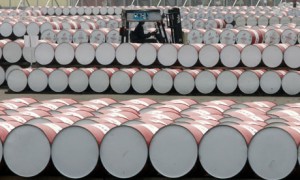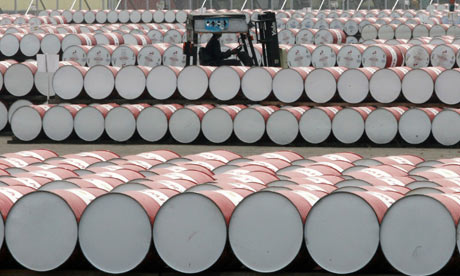
(AFP Photo / Adek Berry)
The subsidies bill for petroleum products will drop in fiscal year 2014/2015 to nearly EGP 60bn compared to EGP 100bn especially allocated from the state’s budget, according to petroleum expert Mohamed Shoaib’s predictions.
Oil prices began to increase with the start of trade in May, with an average price of $67 per Brent barrel, compared to $57 as a maximum price last April. This came as a result of the increase of demand on crude oil in international markets, and the suspension of air strikes on Houthis in Yemen.
In the case of the continuous increase of production from the petroleum exporting countries’ side with a decline in demand from the importing countries’ side, especially China, the price of Brent will drop slightly to less than $60 per barrel, Shoaib said.
Saudi Arabia, the world’s largest exporter of oil, raised its production of crude oil to 10.308m barrels per day in April, compared to 10.29m barrels in March. This came as part of its efforts to enhance its share in the Asian market, in addition to feeding local power plants and refineries.
The increase highlights Saudi Arabia’s insistence not to give up its share in the market to producers with higher costs, such as companies that drill for oil shale in the US.
Saudi Arabia and many other member countries in the Organization of the Petroleum Exporting Countries (OPEC) refrained from reducing production to support prices.
Brent prices will break the $70 barrier per barrel by next winter, according to Shoaib.
“The current government has a golden opportunity to liberalise prices of petroleum products in the local market in the light of the reduction of its value in global markets,” said Shoaib.
The price of 95% purity petrol must be lowered to EGP 3.75 instead of EGP 6.25, since the international value is at EGP 2.7 per litre, Shoaib said.
95% petrol sales declined to 6,000 tonnes annually, instead of 30,000 tonnes before the price reached EGP 6.25.
The American Petroleum Institute announced that the crude oil reserves declined by 1.5m barrels by the end of last week, as a sign of high demand on oil in the country. The US Energy Information Administration will publish the official data for the crude oil reserves for last week, with expectations of an increase of 1m barrels.
JPMorgan Chase & Co. raised its expectations for oil prices during 2015 and 2016 with the improvement in demand, which will consequently lower the crude oil prices offered in the international markets.
JPMorgan further expected that the average American crude oil price will reache $55 per barrel this year, and $64 in 2016, while Brent crude oil price is expected to reach roughly $62 in 2015, and $72 per barrel in 2016.
The International Monetary Fund (IMF) report expected an increase in the growth rate of oil-importing countries from 3% in 2014 to 4% in 2015, after the gradual recovery in the Euro region, improving trust locally, increasing general monetary facilitations, and the monetary policies.
The decline in oil prices helps in an increase of growth rates despite its negative short-term effect on many countries.
According to the IMF report, oil prices increased in the period from July 2014 to April 2015 by 50%.
It is expected that the average price per barrel will reach $58 in 2015, before it gradually increases to $74 per barrel by 2020, as a result of the decline of investments in the oil sector and the reduction in production.
Demand on oil is increasing, in parallel with the global recovery. Most importantly, the decline in prices is expected to continue on the middle term, since the market expectations decreased by 20% since October.




